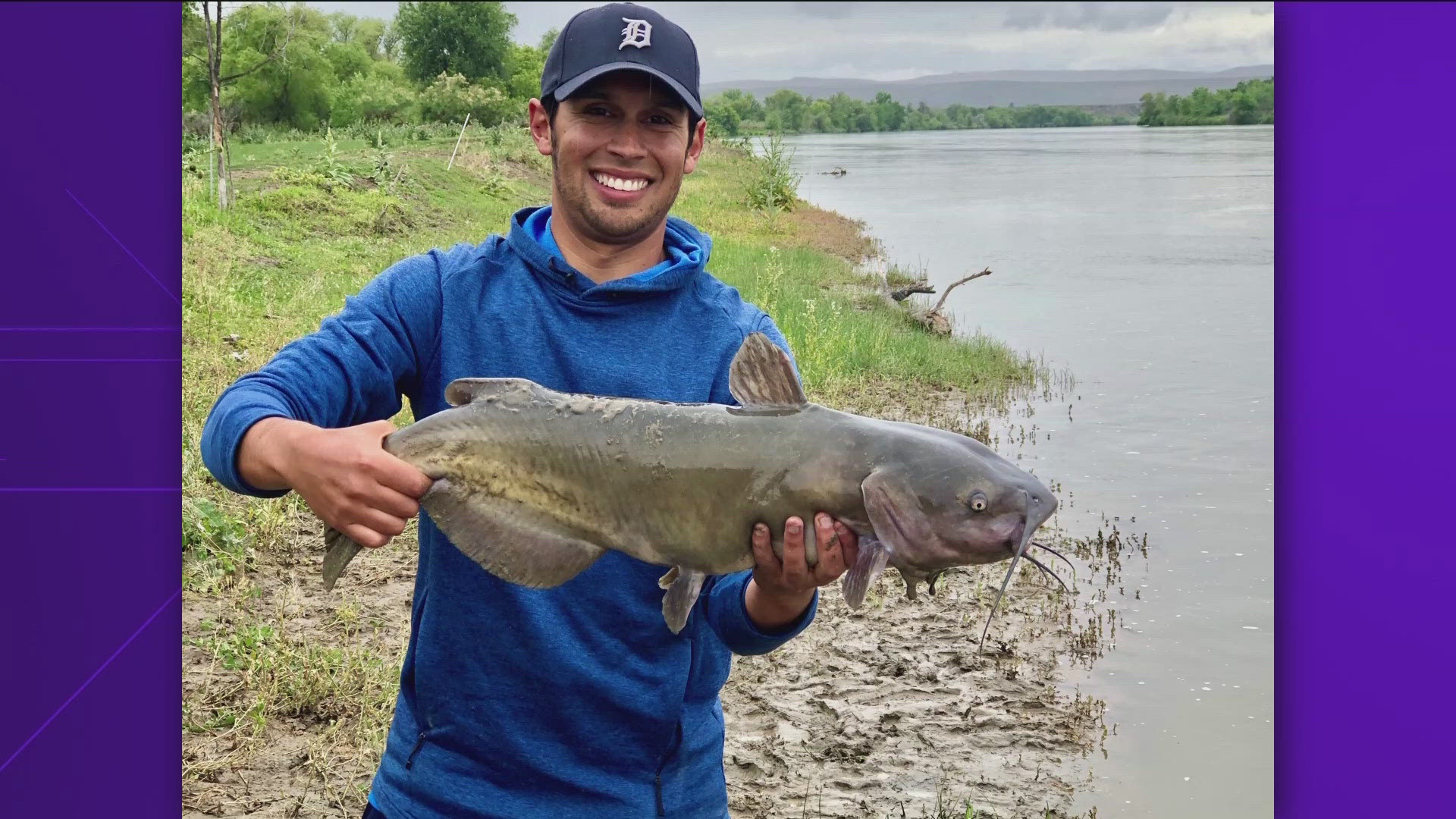BOISE, Idaho — Tight Lines 208 is dedicated to helping people become better anglers through education. The Cram Session is designed to give readers a crash course on a specific fish species or local fishery. Want to see a topic covered? Email tightlinesboise@gmail.com with your suggestion!
Did you know channel catfish are one of the most common species in southwest Idaho’s Snake River? These underrated game fish are also one of the most misunderstood fish in our region. In this Tight Lines 208 Cram Session, we take a closer look at these whiskered predators.
Many anglers think of catfish as bottom feeding scavengers. And while cats do eat their share of food that’s already dead, they are also more than capable of hunting down live prey. Smaller fish, crayfish, mollusks and insects—especially big meals like Mormon crickets—are all on the menu. I do target catfish on certain trips, but I also catch channel cats every year on lures intended for bass or crappie.
As sportfish go, channel catfish check a lot of boxes. They are big, averaging between three and six pounds in our region, with the capacity to grow up to 20 pounds. They aren’t leapers, but they fight hard, pulling drag and testing anglers’ gear with massive headshakes. If you like to harvest some of your catch, smaller channel cats make good eating, especially when fried in a Cajun-style batter.
When targeting catfish, most anglers use bait. Cut bait—fish like sucker, pikeminnow, crappie or bluegill used in strips, chunks, or even whole—is always a good bet. Shrimp, worms, chicken livers, hot dogs, crickets and stinky prepared dough baits are also popular choices. Rig your bait on a circle hook and use sinkers to get it near the bottom of deep, slow-moving holes along the river.
Channel catfish can be caught year-round, but they are most active in summer. Many anglers think of them as nocturnal, and while they do bite at night, they can be caught at all hours of the day. When you do catch one, handle them carefully: channel catfish don’t have sharp teeth, but they do have three spines that can deliver a painful jab. These are located in the front fin ray of the dorsal and pectoral fins. Want to learn more about catching channel catfish? Check out my upcoming class, Catfish are Jumping, happening August 22 at Idaho Rod and Reel tackle shop. I hope to see you there. Tight lines!
Jordan Rodriguez has been fishing Idaho waters for 25 years. Share your fish stories, adventures and questions with him at tightlinesboise@gmail.com, or visit www.tightlines208.com for the latest local fishing reports and upcoming class offerings.

